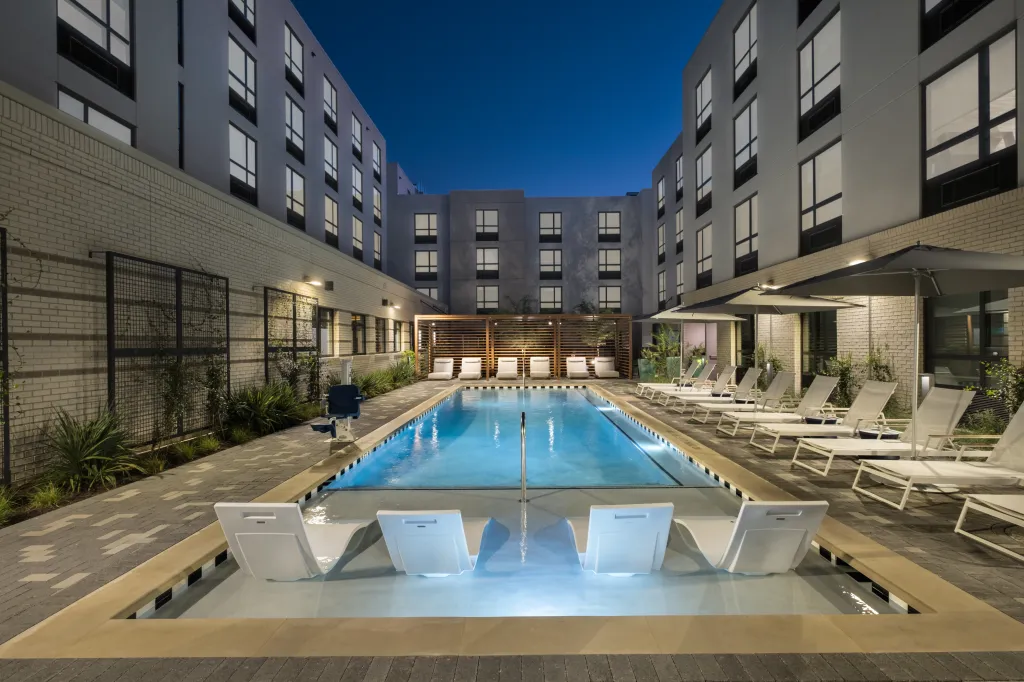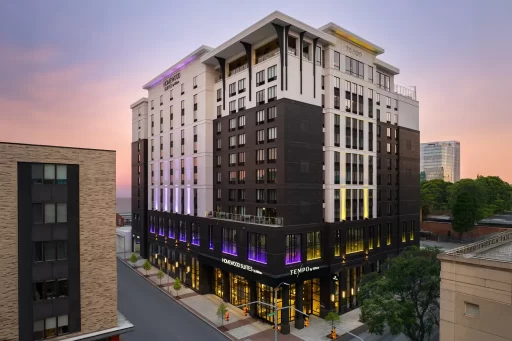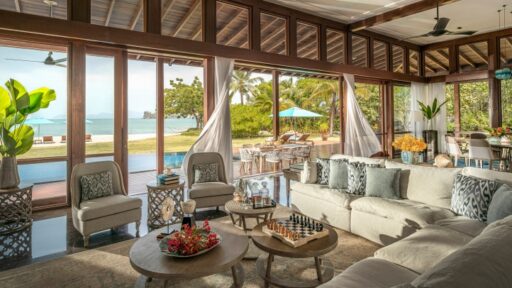Hilton’s growing portfolio of dual-brand hotels is redefining how travelers experience convenience and variety under one roof.
With more than 125 dual-brand properties currently operating and over 100 more in development, pairings like Home2 Suites by Hilton and Tru by Hilton are giving guests flexibility while helping hotel owners optimize operations and cater to multiple types of travelers simultaneously.
Once a novel concept, dual-brand hotels are now central to Hilton’s strategy, allowing multiple guest demographics—from families and extended-stay business travelers to quick-stop road trippers—to co-exist comfortably within the same property.
READ MORE: Sensei Expands Globally with Wellness Debut at Zadún, a Ritz-Carlton Reserve in Los Cabos
These properties often share amenities like fitness centers, pools, and communal dining spaces while delivering the signature experiences of each brand.
For example, guests at a Tru by Hilton enjoy bold, playful design and quick breakfasts like pancakes, while Home2 Suites offers spacious, pet-friendly rooms with kitchenettes and customizable breakfast sandwiches.
As of 2024, dual-brand locations would rank as Hilton’s 8th largest brand if counted separately, showcasing the scale of this model’s success. Among the most common brand pairings:
- 22%: Tru by Hilton × Home2 Suites
- 16%: Hilton Garden Inn × Homewood Suites
- 15%: Hampton by Hilton × Homewood Suites
- 14%: Hampton by Hilton × Home2 Suites
- 9%: Hilton Garden Inn × Home2 Suites
“Dual-brand hotels are no longer just about co-locating brands—they’re about blending experiences,” says Andrew Harp, brand leader at Tru by Hilton.
These properties are now found in a wide range of markets—from bustling metros like Nashville and Montreal to smaller cities such as Lumberton, NC and Kearney, NE—adapting flexibly to local demand.
In addition to guest benefits, dual-brand hotels create cost efficiencies for owners by consolidating back-of-house operations and maximizing revenue opportunities through diverse target audiences.
Developers can attract both short-term and extended-stay guests within a single investment, which is especially beneficial in mixed-demand markets.
Recent examples highlight the model’s flexibility:
- Tru by Hilton × Home2 Suites by Hilton Phoenix Midtown: A custom-adapted prototype for this pairing, featuring pet-friendly rooms and breakfast experiences unique to each brand.

- Tru by Hilton × Home2 Suites by Hilton Lumberton: One of the largest hotels in its city, bringing Hilton’s signature comfort and community-focused design to a smaller market.

- Tempo by Hilton × Homewood Suites by Hilton Raleigh Downtown: A first-of-its-kind pairing that merges upscale urban living with extended-stay convenience, complete with a rooftop bar and flexible meeting spaces.

- Hampton by Hilton × Home2 Suites by Hilton Austin East Side 5th Street: Perfectly located near Austin’s downtown scene, this dual-brand property offers shared amenities like a pool and fitness center, plus a free breakfast combining dishes from both brands.

- Hilton Garden Inn × Home2 Suites by Hilton Nashville West End Avenue: A stylish option in Nashville’s Midtown with a rooftop pool, on-site dining, and easy access to the city’s top attractions.

As Hilton continues to roll out these innovative concepts, the dual-brand model is proving to be more than just a trend—it’s a smart evolution of hospitality that prioritizes choice, efficiency, and value for guests and owners alike.
READ MORE: Four Seasons Launches New Luxury Private Residences in Georgetown, Washington, DC



